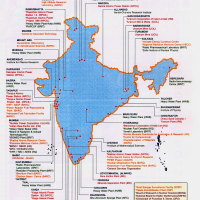Recently, the Huffington Post reported thatChange.org has abandoned its progressive roots and apparently planned on doing it without telling anyone, according to documents leaked from a Change.org employee to Jeff Bryant with Campaign for America’s Future. (According to this petition on rival petition site Signon.org, that employee has nowbeen fired.)
So why is Change.org changing?
“[W]e as an organization have transitioned from an American cause-based organizing network with a largely progressive agenda into a global platform open to a wider diversity of participants and perspectives,” wrote Change.org founder and CEO Ben Rattray to his staff, in an email also leaked to The Huffington Post.
For the past three years, Food & Water Watch has run campaigns with Change.org, so we were outraged when we heard that they would now potentially be working with the likes of Monsanto, the American Petroleum Institute, and anyone else that wants to run a campaign with them.
We spoke with several leaders inside Change.org last week, including Ben Rattray himself. He tried to reassure us that their change in policy did not mean a change in values, and they would not start working with Monsanto tomorrow.
Our conversations did not reassure us.
Rattray characterizes this new “open” policy as a way to indicate that they are non-partisan and focused on empowerment as a tool of change. I pointed out to him that in many cases the issues we work on, from fracking and genetically modified organisms to privatization of our common resources and the destruction or weakening of unions, has been embraced by both major parties.
In fact, wouldn’t we hope that a platform like Change.org would hold Democratic Party officials accountable to their base, rather than the corporations that are buying votes and ultimately creating a situation where public policy is for sale?
And let’s talk about empowerment. We don’t want to see climate change deniers empowered. We have worked with Change.org to empower people with a vision of a better world that is economically and socially equitable and where the environment is protected.
We’ve experienced time and time again being outspent on campaigns by industry front groups that have slick messaging and PR campaigns that are meant to confuse and paralyze voters and the democratic process. We’re seeing this right now in California where we’re trying to pass Prop 37 to give citizens the right to know if their food contains genetically modified ingredients. The biotech and processed food industries are pouring more than $35 million dollars into campaigns designed to mislead voters, while the side fighting for Prop 37 has pennies to their dollars to educate voters about the truth.
Even after talking with Ben, I get the impression that their decision comes down to increasing their size and reach. This will mean more advertisers and higher revenues. We’re disappointed that Change.org has apparently decided that profit trumps progressive values. I think Change.org has become confused about what kind of change we want and what democracy really looks like.
This is just one more example of why it is so important to have a strong and vibrant public interest community that does not accept money from corporations and that keeps an appropriate distance because in a for-profit company, the pressure is always to increase earnings for shareholders and investors. As long as this is all above board and everyone understands the relationship, so be it. But it’s unseemly when an organization that claims to be progressive, and has built its organization on working with the progressive community, sells out like this.
Thankfully, there are other progressive groups that aren’t embarrassed about being progressive. Organizations like Care2, Credo Mobile, and Moveon.org who are working in this sphere are committed to the kind of change we want, and won’t compromise in the interest of increasing profits.
Recently there has been a lot of chatter about how our political system is so broken that we should just let business take the lead in creating social change. This is a dangerous sentiment. No matter how well-meaning companies may be, the pressure will always be on increasing market share and making a profit. This doesn’t mean that there won’t be some good companies that maintain their principles and make a fair profit. But, there will always be people who are willing to put aside their principles and original vision to attract investors and to increase profits. We will be watching to see what happens at Change.org and keeping our fingers crossed that they don’t weaken the very movement that they were formed to strengthen.
This post originally appeared on Food & Water Watch’s blog.
- Open letter to Ben Rattray, CEO, Change.org – “Et tu Brutus” (kractivist.wordpress.com)
- Change.org Changing: Site To Allow Corporate, Anti-Abortion, GOP Campaigns #takecaction (kractivist.wordpress.com)
- Has Change.org compromised its values for ad revenue? #Benrattray #Mustshare (kractivist.wordpress.com)
- Change.org – the Brutal Betrayal ! (kractivist.wordpress.com)
- Why I Will Not Sign Another Change.org Petition, Ever (crooksandliars.com)
- “You Can’t Be Neutral on a Moving Train.” #change.org #mustread (kractivist.wordpress.com)























